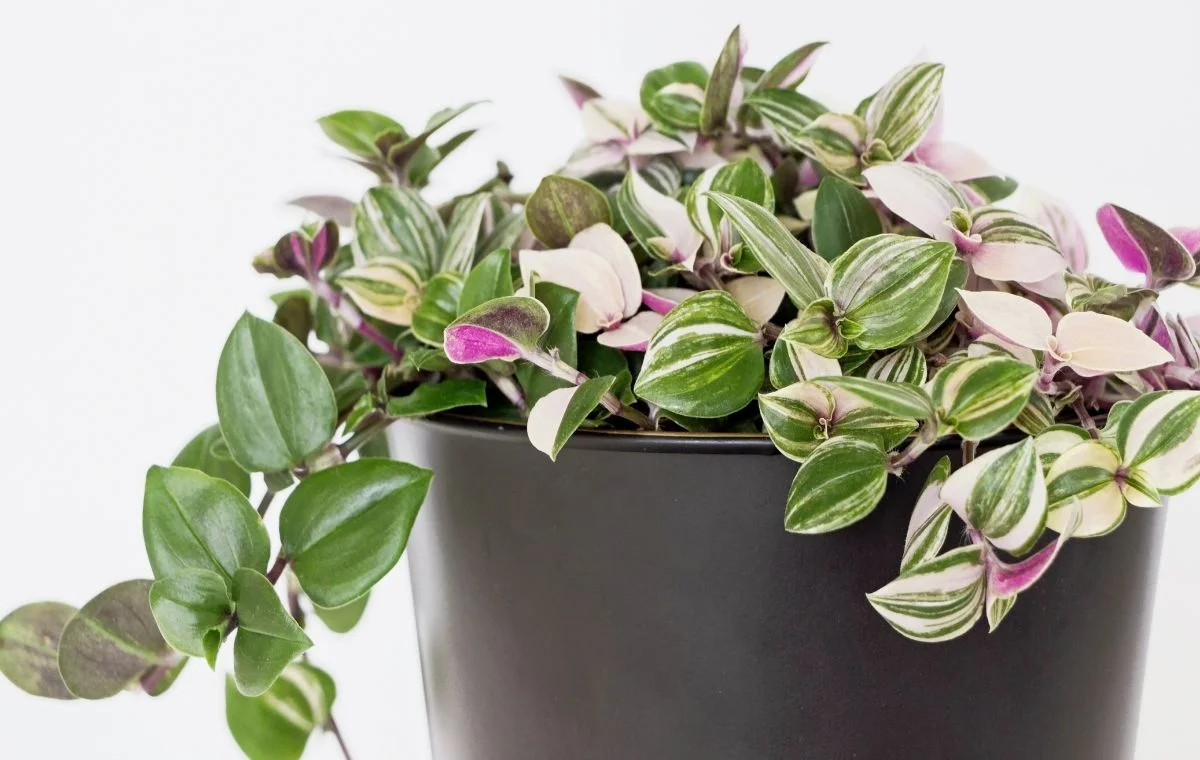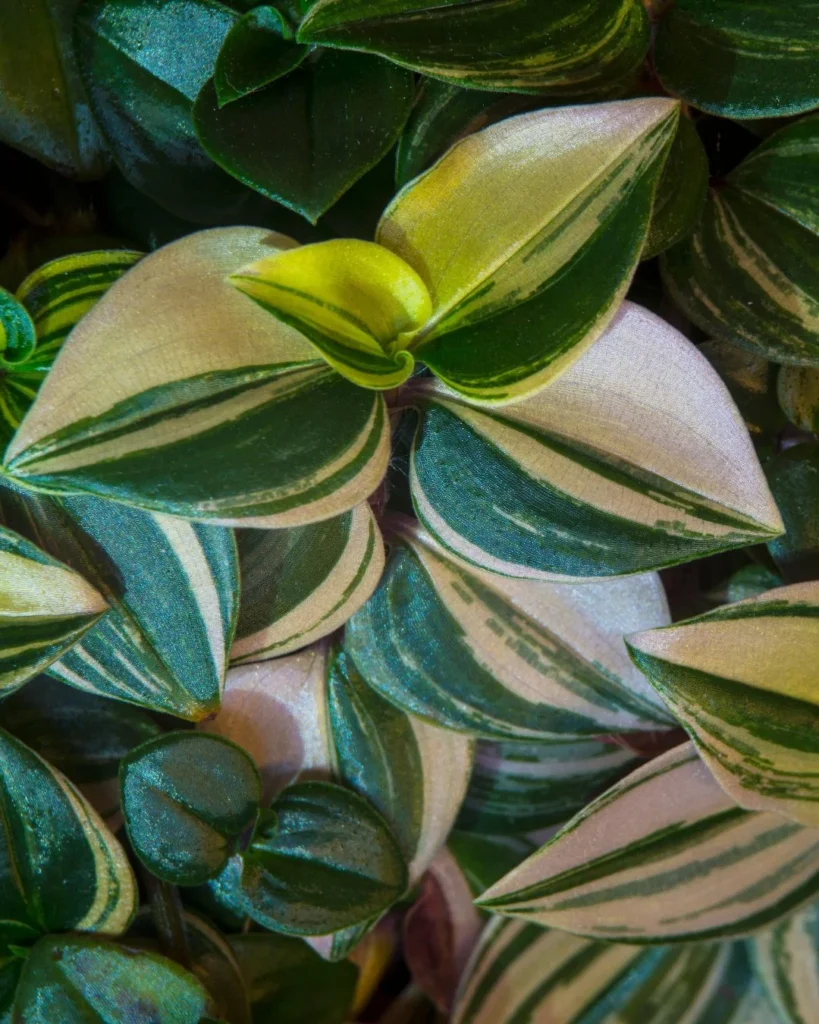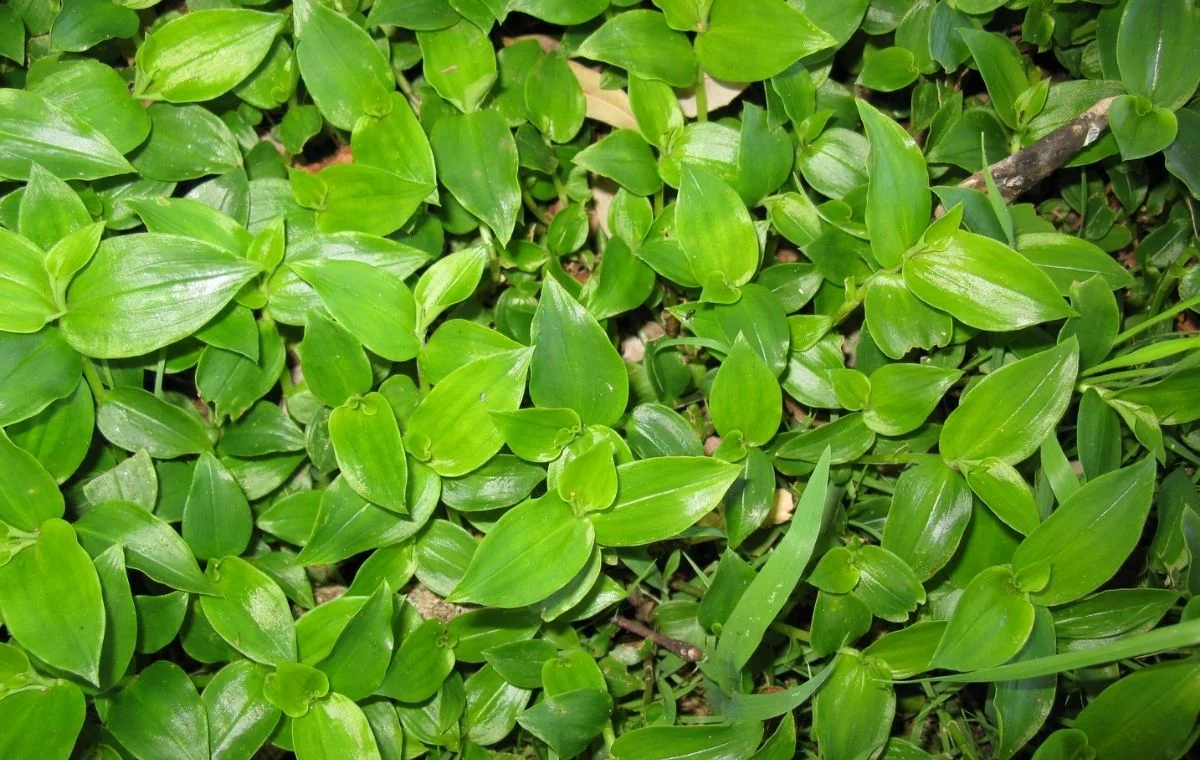
The Wandering Jew (Tradescantia fluminensis) is a perennial, herbaceous plant known for its prominent foliage. It features sprawling, branched stems that grow from the base and easily produce adventitious roots. Its leaves are opposite, pointed, oval-shaped, slightly fleshy, smooth, and have a dark green, glossy color. There are also variegated forms with white and/or pink patterns, known as white-striped and pink-striped lambari. Some famous cultivars include ‘Quicksilver’, ‘Lavender’, and ‘Maiden’s Blush’. The plant produces white or pink three-petaled terminal flowers in the summer, forming small clusters that can yield numerous seeds. Its fruit consists of four follicles.
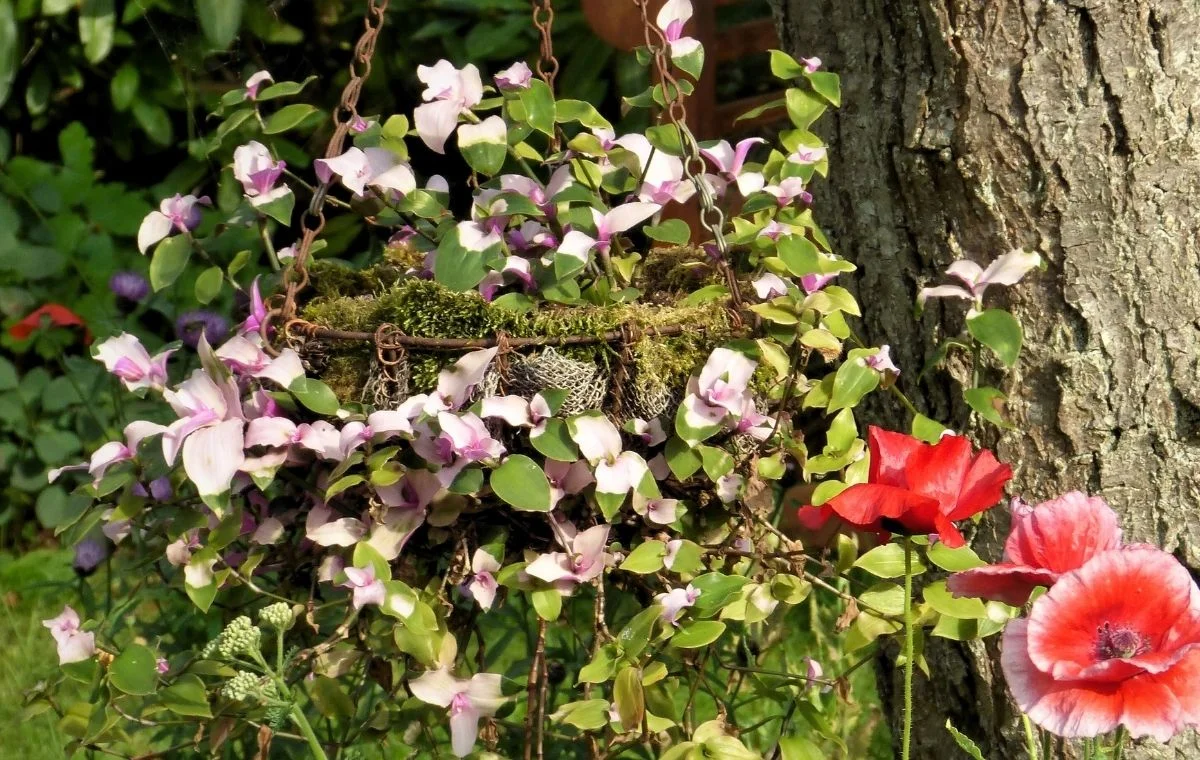
Commonly cultivated as an ornamental plant in pots or gardens, the Wandering Jew is excellent for partial shade ground cover. Its ability to spread across the ground, forming dense mats up to 6.6 feet in diameter, makes it a suitable choice for shaded areas. However, it should not be walked on like regular grass. Another popular use, especially for variegated forms, is in hanging baskets and containers.
Its trailing growth habit adds a unique charm to the surroundings, resembling a skirt for the pot. It’s a great addition to gardens for texture or color, in the case of variegated varieties. But beware, as the Wandering Jew can be invasive and smother the growth of smaller species. Low-maintenance and hardy, it requires occasional pruning to renew foliage and manage its growth, maintaining a compact shape.
This plant thrives in partial shade or filtered light and prefers warm and humid climates. In low-light conditions, variegated forms may revert to solid green, losing their distinct patterns. It’s a fast-growing species that prefers well-draining, moisture-retaining soil rich in organic matter. While it can endure full sun and retain water due to its fleshy nature, extended dry periods might stress it. Be cautious with saucers under pots or poorly draining beds, as this can lead to root rot.
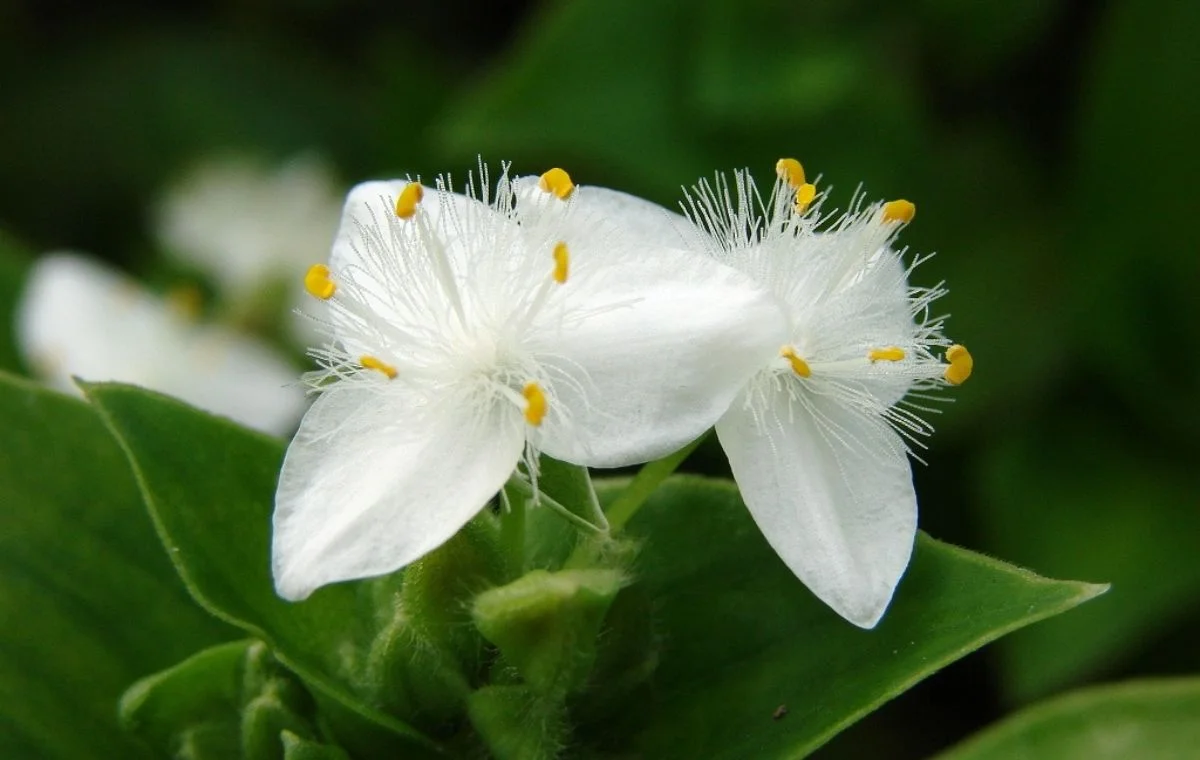
Like other plants in the Commelinaceae family, Tradescantia fluminensis, despite being perennial, can lose its vigor over time and it is interesting to revitalize it by producing new cuttings and replanting the matrix.
In colder temperatures, growth slows down, and the Wandering Jew can’t tolerate prolonged periods below 50°F or frost. Therefore, in cold regions with temperate to subtropical climates, it’s advisable to bring potted plants indoors during winter.
Watering should be more frequent in summer and less frequent in winter, based on substrate moisture. Water when the surface of the soil is slightly dry. Regular bi-weekly fertilization with liquid fertilizers during spring and summer supports growth. Propagation is possible through stem cuttings or division of lateral shoots (offsets) in spring. Cuttings can be rooted in moist potting mix or in containers with clean, regularly changed water.
